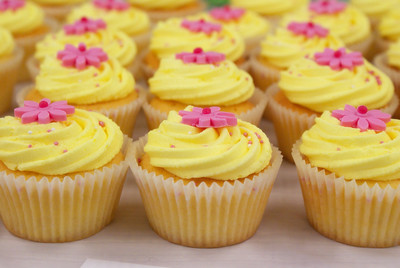Summary
Students will explore the relationship between fractions using real-world examples. First, students will practice different strategies for converting fractions for a cupcake recipe. This includes adding fractions, converting mixed numbers, and working with improper fractions. Students will extend their understanding by creating their own word problems using real-world examples.
Essential Question(s)
How does adding and multiplying fractions relate to real-world problems?
Snapshot
Engage
Students watch a video of kids baking cupcakes as an introduction to discussing fractions.
Explore
Students work through a word problem about baking cupcakes that involves fractions. Students learn to use different strategies to solve the problem.
Explain
Students engage in a Strategy Harvest activity to demonstrate different ways to find ingredient amounts that will be needed for a recipe.
Extend
Students engage in solving a new problem, this time using their own cookie recipes.
Evaluate
Students create their own word problems to show understanding of the essential question.
Materials
Recipe Slides (attached)
Cupcake Recipe (attached; one per student)
Ingredients Table (attached; one per student)
Cookie Recipes (attached)
Writing Real-World Problems (attached; one per student)
Sample Student Problems (attached)
Engage
To begin, show the class the video segment “Cupcake Mix Meets Fractions,” which shows two girls baking cupcakes. As the video plays, ask students to notice and discuss how fractions help the kids with their bake sale goals.
After the video has played, ask students the following questions:
What was the problem the girls encountered with the recipe?
How did they solve the problem?
What strategy did they use to decide how much of the chocolate bar to use?
Explore
Use the attached Recipe Slides for this section of the lesson and pass out a copy of the attached Cupcake Recipe to each student.
Display slide 3. Introduce the following story problem to the class. Read aloud with plenty of inflection to engage students:
I want to bake cupcakes for a party and need to buy all of the ingredients. There will be 24 people there. If I want to make enough cupcakes for everyone using the following recipe, how much of each ingredient do I need to shop for?
Have students work with a partner or small group to determine strategies for finding the solution. Students should record their answers on a graphic organizer or scrap paper. Encourage students to find at least two ways to determine the best answer.
As students are working together, make sure to monitor their progress and collaboration, helping as needed. After students have had enough time to work together, ask the following questions to the whole class:
Why should we try multiple strategies?
How can that help us make sure our solution is correct?
What strategies did you use that you can share?
Explain
After the class has worked through multiple ways to solve the problem, use the Strategy Harvest strategy as a class. Before discussing, display slide 4, and pass out a copy of the attached Ingredients Table handout to each student. Discuss the strategies that students used to find how much of each ingredient needs to be purchased. Have students complete the middle column as each ingredient is discussed. This gives students a chance to think through different strategies and how the answers were reached.
Now, have students convert the same recipe to make 36 cupcakes. This gives students a chance to practice these strategies on their own. Monitor and observe which strategies students use to find the correct amounts of each ingredient. Are they using only one strategy or trying out a variety of strategies?
Extend
During this part of the lesson, pose a new problem to students:
Julie is baking three different types of cookies for a cookie swap. How does she need to change the following recipes to make 36 cookies of each type?
Pass out three cookie recipes the class has brought from home, or pass out a copy of the attached Cookie Recipes handout to each student.
Evaluate
Revisit the essential question: How does adding and multiplying fractions relate to real-world problems? To put it another way: How can we represent real-world numbers as fractions and convert them when needed?
Pass out one equation from the attached Writing Real-World Problems handout to each student (one equation per page), or create a similar set of equations with fractions and/or mixed numbers and give one to each student. Introduce students to the Create the Problem strategy. Have the class show that they understand the essential question by asking each student to create a real-world problem (written on the handout or on a piece of notebook paper) based on the equation they were given.
Resources
K20 Center. (n.d.). Create the problem. Strategies. https://learn.k20center.ou.edu/strategy/149
K20 Center. (n.d.). Jigsaw. Strategies. https://learn.k20center.ou.edu/strategy/179
K20 Center. (n.d.). Strategy harvest. Strategies. https://learn.k20center.ou.edu/strategy/135
"Shari Spotter and the Cosmic Crumpets | Cupcake Mix Meets Fractions." (2004). Cyberchase [Television series]. New York, NY: Thirteen/WNET. https://oeta.pbslearningmedia.org/resource/vtl07.math.number.fra.cupcakemix/cupcake-mix-meets-fractions-cyberchase/


